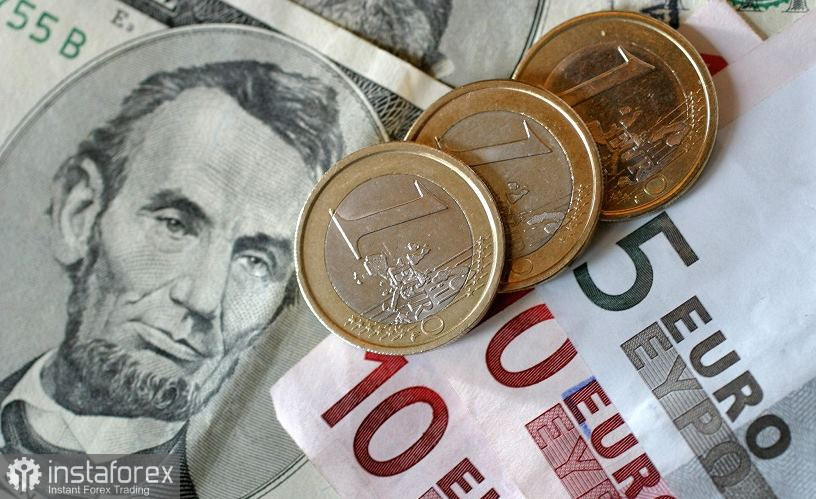EUR/USD has begun this trading week with a strong upsurge. On Friday, EUR/USD bulls tried to extend its upward correction, but the pair retreated to the parity level by the end of the session. On Monday, the pair jumped by more than 100 points in just a couple of hours. Is it a trend reversal, or merely a continuation of last week's correction?

EUR/USD is moving upwards only thanks to weaker US dollar, and not because the euro is moving up. When the US dollar's downward correction ends, the euro will fall behind once again. EUR/USD bulls have failed to take advantage of ECB's hawkish moves. Now, as winter looms and the economic crisis continues to deepen, other fundamental factors could seriously affect the euro's performance.
Furthermore, the US dollar is falling against all major currencies with no events on the economic calendar to trigger this decline. This suggests that it is a downward correction amid rising risk sentiment in the market. The US dollar index rose to a 20-year high last week amid hawkish expectations from the Federal Reserve. Such movements are always followed by a correction.
In addition, this downward correction is preceding the release of key US inflation data. Tomorrow, CPI data for August will be released, followed by PPI and import prices data on Wednesday and Thursday. Obviously, the consumer price index data is the report that will have the biggest impact on traders. At this point, giving any outlooks on USD, even short-term ones, would be pointless. Inflation data could either give support to USD or put pressure on the US currency.
It should be noted that these data releases will be published during the 10-day blackout period – a period in the run-up to the FOMC meeting when Fed policymakers are forbidden from speaking publicly about their monetary policy stance. How will the Fed react if the CPI increases or declines? It will be a secret until the FOMC meeting concludes.
At this point, the 75 bps hike in September is all but certain. Any fluctuations of inflation indexes would influence the stance of Fed policymakers on the pace of monetary tightening in the future. Regarding the upcoming FOMC meeting, many officials including Jerome Powell himself signalled they would back a 75 bps move.
For example, Christopher Waller, member of the Fed Board of Governors, stated on Friday that he would back a significant rate hike this month. The president of the Fed Reserve Bank of St. Louis James Bullard said that he was leaning towards a 75 bps hike. Last week, Fed chairman Jerome Powell made an explicitly hawkish statement, saying that the regulator would act forthrightly and strongly to bring down inflation. "History cautions strongly against prematurely loosening policy," Powell added.
All this indicates that the current upward movement of EUR/USD is merely a correction. There is nothing that could lead to a trend reversal, particularly with key inflation data and the Fed policy meeting on the horizon.
Going long on EUR/USD in this situation is highly risky. Taking fundamental factors into account, opening short positions during upward retracements would be the best trading strategy. It is best to wait until the momentum of the pair slows down before doing so. It should be noted that EUR/USD bulls have failed to push the pair through the resistance at 1.0200, the lower boundary of the Kumo cloud on the daily chart. This would be a key level for the pair – if EUR/USD fails to settle above it in the upcoming days, bearish traders will likely take the initiative. Otherwise, the pair could move up to the next resistance level of 1.0280, the middle line of the Bollinger Bands indicator on the weekly chart. Overall, the best course of action is staying out of the market until the correction ends. Medium-term targets for the pair remain unchanged at 1.0050, 1.0000, and 0.9950.
 English
English 
 Русский
Русский Bahasa Indonesia
Bahasa Indonesia Bahasa Malay
Bahasa Malay ไทย
ไทย Español
Español Deutsch
Deutsch Български
Български Français
Français Tiếng Việt
Tiếng Việt 中文
中文 বাংলা
বাংলা हिन्दी
हिन्दी Čeština
Čeština Українська
Українська Română
Română

